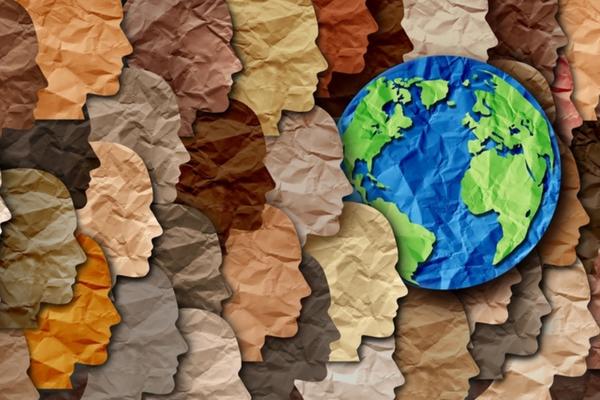Insights
INSIGHTS
All Topics
What's the difference between charity and philanthropy?
28 Dec 2024by Elaine Taylor
We explore the key differences between ’charity’ and ’philanthropy’
Imagine ’charity’ and ’philanthropy’ are two sides of the same Venn diagram. They share a lot of the same principles, but in practice, charity and philanthropy are quite different.
The most basic difference between charity and philanthropy is that, typically, charity addresses short-term issues, such as providing aid after a natural disaster. At its crudest definition, charity is regular people putting their hands in pockets to help others in need.
Philanthropy, on the other hand, seeks to address the root cause of a social problem and, where relevant, implement systemic change. It’s also often led by extreme-wealth holders and/or individuals with legacy, power, and influence. Simply put, philanthropy can be summarised as the use of private wealth for public good.
While understanding the basic differences between charity and philanthropy is useful, it’s also limited. To truly understand the differences, we need to go back to the beginning.
The history of philanthropy and charity
The etymology of ’philanthropy’ is important to understand it’s modern-day significance and the ways it differs from ’charity’. The term first emerged in Ancient Greece in the play Prometheus Unbound by Aeschylus. Prometheus is described as a ‘philanthropist’ for daring to steal the secret of fire from the Gods and give it to humans (yes, using that example, Robin Hood qualifies as a vigilante philanthropist).
Fast forward to 1601 with the publication of The Statute of Charitable Uses. The statute introduced a legal definition of charity, which culminated with the 1891 Pemsel case. It laid the foundation for a modern-day understanding of philanthropy as a concept concerned with secular problem-solving.
By the time we reach the eighteenth century, prominent ’philanthropists’ like John Howard or William Wilberforce were subscribing to this ’problem-solving’ ideal by campaigning and using their political influence to create lasting change.
A shift began in the nineteenth century. The emergence of ultra-wealthy individuals in the US, like John D Rockefeller, J. P. Morgan, and Andrew Carnegie created what is sometimes referred to as the ’gilded age of mega-donors’. They were vilified by some as ‘robber barons’ but celebrated by others for the scale of their giving.
Philanthropy today
The legacies of Rockefeller and Carnegie paved the way for today’s model of philanthropy and philanthropists. Some of the most well-known, established philanthropists today include Bill Gates, Warren Buffet, Marlene Engelhorn, Mackenzie Scott, and others.
In addition to philanthropists themselves, the US dominates western philanthropy with some of the largest and well-known foundations, including the Rockefeller Foundation, the Bill Gates Foundation, the Ford Foundation, and so on.
But philanthropy extends beyond the US and Europe. Some argue that philanthropy in the global south is coming of age. Pilanthropists and foundations are vying for a new way of giving, one that focuses primarily on ’trust-based philanthropy’. Strive Masiyiwa and Catherine Loh are two prominent examples of non-western philanthropists.
As a sector, philanthropy is not without its problems, but its impact on society cannot not be underestimated. Accumulated giving from European philanthropy reaches around €54.5 billion per annum. In the US, giving from individuals, bequests, foundations, and corporations reached an estimated $557.16 billion in 2023.
Where do philanthropy and charity overlap?
At the centre of the Venn diagram where charity and philanthropy intersect is impact.
Some of the most successful charitable activities result in immediate impact for service users and beneficiaries. For example, the number of food parcels provided by the Trussell Trust to people in need between April 2022–March 2023 reached almost three million (2,986,203). The figure is the largest number of parcels the charity have ever distributed in a single year. In 2022, Bloody Good Period provided 119,000+ packs of menstrual products to refugees, asylum-seekers, and those in need without the means.
Philanthropy’s big successes can be measured through the systemic change that accompanies giving. For example, in 2020, Premier League footballer (and multi-millionaire) Marcus Rashford launched his school meal campaign, which called to give eligible children access to free school meals during the holidays, as well as a full-scale review of the free school meals system.
While donations were a component of the national campaign, it was Rashford’s push for lasting change that moved this campaign across the Venn diagram into an act of philanthropy. As a result of the campaign, the UK Government permanently changed its policy over free school meal vouchers. Football players, as high net worth holders with considerable influence, have a history as philanthropists.
Another more sector standard example is The Freedom Fund’s ground-breaking approach to tackling the complex issue of modern slavery. By recognising that isolated efforts were insufficient, the organisation adopted a systems-change strategy. This involved pooling resources from multiple major donors; strategic collaboration with stakeholders, governments, businesses, and NGOs; and investing in grassroots organisations to empower local communities to combat slavery at its source.
The holistic approach marked a departure from traditional, fragmented anti-slavery efforts. By addressing the interconnected factors contributing to modern slavery, the Freedom Fund is achieving progress that will last.
Philanthropy and charity: in conclusion
The most effective approaches to addressing societal challenges often combine elements of both charity and philanthropy. By understanding the differences between the two, individuals and organisations can make informed decisions about how to allocate resources and maximize impact.
Whether it’s providing essential services to those in need or driving systemic change, both charity and philanthropy play crucial roles in building a more equitable and just world.
Elaine Taylor
More on this topic
Recommended Products
Recommended Products
Related Videos
27 Dec 2024by Ioan Marc Jones
The best online event platforms for charities
24 Dec 2024by Josie Sparling
Podcast: What does digital accessibility mean for charities?
Our Events
Charity Digital Academy
Our courses aim, in just three hours, to enhance soft skills and hard skills, boost your knowledge of finance and artificial intelligence, and supercharge your digital capabilities. Check out some of the incredible options by clicking here.



















